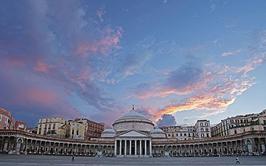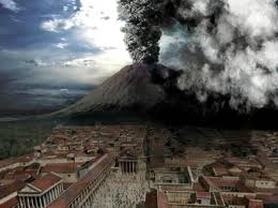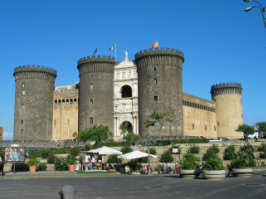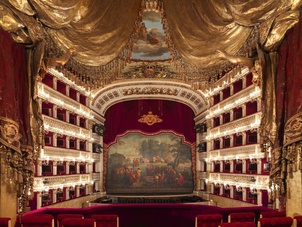Things to do
 Piazza del Plebiscito
Piazza del Plebiscito
Piazza del Plebiscito
In the city center is the main city square, the Piazza del Plebiscito, which is also the largest square in Naples. Featured on the square is the Royal Palace, which was built in the 17th century and added to in the 1800's. Also on the square is the oldest continuously active opera house in Europe, the 18th century Teatro di San Carlo.
 POMPEII
POMPEII
POMPEII
On August 24, 79 Mount Vesuvius literally blew its top, spewing tons of molten ash, pumice and sulfuric gas miles into the atmosphere
A "firestorm" of poisonous vapors and molten debris engulfed the surrounding area suffocating the inhabitants of the neighboring Roman resort cities of Pompeii, Herculaneum and Stabiae.
On August 24, 79 Mount Vesuvius literally blew its top, spewing tons of molten ash, pumice and sulfuric gas miles into the atmosphere
A "firestorm" of poisonous vapors and molten debris engulfed the surrounding area suffocating the inhabitants of the neighboring Roman resort cities of Pompeii, Herculaneum and Stabiae.
 POMPEII
POMPEII
Tons of falling debris filled the streets until nothing remained to be seen of the once thriving communities. The cities remained buried and undiscovered for almost 1700 years until excavation began in 1748. These excavations continue today and provide insight into life during the Roman Empire.
Mount Vesuvius
 Mount Vesuvius
Mount Vesuvius
Vesuvius had erupted before and continued to erupt about once a century until about A.D. 1037, at which point the volcano grew quiet for about 600 years. During this time, the area grew, and when the volcano erupted in 1631, it killed about 4000 people. During the rebuilding efforts, the ancient ruins of Pompeii were discovered on March 23, 1748. Today's population around Mt. Vesuvius is about 3 million, which is potentially catastrophic in the area of such a dangerous "Plinian" volcano.
THE SPANISH QUARTER
The entire area of the Spanish Quarter in the first few years of its existence was, a "Spanish Quarter," it was in these houses that many of the 6,000 Spanish soldiers quartered in Naples in the mid-sixteenth century found accommodations before moving into a central barracks in the 1650s. The area behind the main street still contains some Baroque churches from the late 1500s and early 1600s. The most famous of these is the Church of Santa Maria della Concezione a Montecalvario, from the year 1589. This church was also the site of an orphanage sponsored by the congregation and was in operation until the end of the 1800s. The church was rebuilt in the 1720s and has a central space with side chapels and a dome. The residences in the Spanish Quarter are four and five stories high, quite an accomplishment for 1600. A long rebellious nest of medieval clutter into which the King’s soldiers ventured at considerable risk was made somewhat more manageable by the introduction of broad straight roads that were easy to patrol. The centuries have by-passed that concept somewhat, for it is now the Spanish Quarter, itself, that has acquired a foreboding reputation as a section of Naples where a stranger does not enter without some caution.
The entire area of the Spanish Quarter in the first few years of its existence was, a "Spanish Quarter," it was in these houses that many of the 6,000 Spanish soldiers quartered in Naples in the mid-sixteenth century found accommodations before moving into a central barracks in the 1650s. The area behind the main street still contains some Baroque churches from the late 1500s and early 1600s. The most famous of these is the Church of Santa Maria della Concezione a Montecalvario, from the year 1589. This church was also the site of an orphanage sponsored by the congregation and was in operation until the end of the 1800s. The church was rebuilt in the 1720s and has a central space with side chapels and a dome. The residences in the Spanish Quarter are four and five stories high, quite an accomplishment for 1600. A long rebellious nest of medieval clutter into which the King’s soldiers ventured at considerable risk was made somewhat more manageable by the introduction of broad straight roads that were easy to patrol. The centuries have by-passed that concept somewhat, for it is now the Spanish Quarter, itself, that has acquired a foreboding reputation as a section of Naples where a stranger does not enter without some caution.

CASTLES
There’s the Castel Nuovo, built in 1279 by Charles I of Anjou; Castel dell’Ovo, with ancient origins and pretty much the best name (“Egg Castle”) ever; and Castel Sant’Elmo, a fortress towering over the city that dates back to at least 1275. There’s also Castel Capuano, a 12th-century castle at the east end of Via dei Tribunali, but it was so heavily restored it’s tough to see the 12th-century character beneath the facade.
There’s the Castel Nuovo, built in 1279 by Charles I of Anjou; Castel dell’Ovo, with ancient origins and pretty much the best name (“Egg Castle”) ever; and Castel Sant’Elmo, a fortress towering over the city that dates back to at least 1275. There’s also Castel Capuano, a 12th-century castle at the east end of Via dei Tribunali, but it was so heavily restored it’s tough to see the 12th-century character beneath the facade.
MUSEO ARCHEOLOGICO NAZIONALE
It is the biggest roman architectural museum in the World, even bigger than the National Museum of Rome. Its collection is astonishing both considering the quality and the quantity of the objects on display. Naples Archeological Museum houses wall paintings and different objects removed from Pompeii, Herculaneum, and other excavation sites in the area. In addition, you can admire the Farnese collection of Roman sculptures (including the famous sculptures of the Caracala Bath
It is the biggest roman architectural museum in the World, even bigger than the National Museum of Rome. Its collection is astonishing both considering the quality and the quantity of the objects on display. Naples Archeological Museum houses wall paintings and different objects removed from Pompeii, Herculaneum, and other excavation sites in the area. In addition, you can admire the Farnese collection of Roman sculptures (including the famous sculptures of the Caracala Bath
TEATRO DI SAN CARLO
Teatro di San Carlo was built in 1737. It was the biggest opera house in the world and the oldest public opera house in Europe.
The old building was burnt down by fire on February 12, 1816, and then reconstructed by Antonio Niccolini under the order of King Ferdinand IV With it’s horse-shoe shaped theatre and superb sound quality it is a dream venue for many renowned operas, concerts and ballets.
Situated in proximity to the central Piazza Del Plebiscito and connected to the Royal Palace
The old building was burnt down by fire on February 12, 1816, and then reconstructed by Antonio Niccolini under the order of King Ferdinand IV With it’s horse-shoe shaped theatre and superb sound quality it is a dream venue for many renowned operas, concerts and ballets.
Situated in proximity to the central Piazza Del Plebiscito and connected to the Royal Palace

